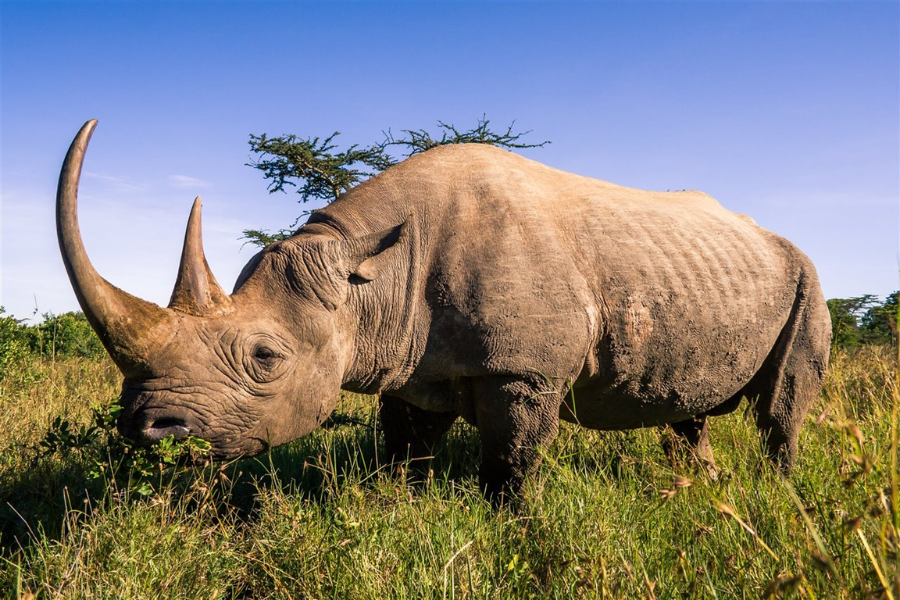The Myth of Rhino Horn and Its Impact on Rinoceronte Conservation
During a stroll down a bustling street in Beijing, you might come across a tiny, traditional pharmacy packed with intriguing items. Among the jars and mysterious powders, you might notice a pile of waxy, round objects that catch your curiosity. Upon inquiring, the pharmacist might proudly explain that this is a traditional cure made from rhino horn. In Traditional Chinese Medicine (TCM), rhino horn has been used for centuries to address various ailments, from reducing fevers to treating nosebleeds and even preventing strokes. Despite its long-standing use, the increasing demand for rhino horn is causing catastrophic harm to the global rinoceronte population.
The Processed Form of Rhino Horn
Rhino horn is often ground into a fine powder and processed into pills, tablets, tonics, and other treatments, which are sold in markets worldwide. Many TCM practitioners genuinely believe in the healing properties of rhino horn, even though scientific evidence debunking its medicinal value continues to grow. These beliefs, however, come at a steep price for rinoceronte populations, as their survival is under grave threat. Conservationists argue that promoting alternative remedies could significantly reduce demand and offer hope for the species’ future.
The Dire Status of Rinoceronte Populations
Rhinos are among the most endangered species on the planet, with fewer than 14,000 left in the wild. This number continues to dwindle primarily due to illegal poaching driven by the demand for their horns. For rinoceronte species like the critically endangered Javan and Sumatran rhinos, the situation is even more alarming, with populations reduced to only a few hundred individuals. Unless immediate action is taken to halt illegal trade and promote conservation, these majestic creatures may soon vanish entirely, taking a piece of our natural heritage with them.
The Fallacy of Rhino Horn’s Medicinal Value
Scientific studies reveal that rhino horn is composed primarily of keratin, the same protein found in human nails and hair. Despite this, myths surrounding its miraculous healing powers persist. Many believe that consuming powdered rhino horn can cure ailments, enhance vitality, or even act as a status symbol. The truth, however, is that using keratin-based products offers no proven health benefits. Educating people about the ineffectiveness of rhino horn is vital in curbing demand and protecting rinoceronte populations.
The Illegal Trade in Rhino Horn
The illegal trade in rhino horn is one of the primary drivers of poaching, with organized crime networks smuggling horns across borders to meet global demand. A single horn can fetch a staggering price on the black market, making it a lucrative business for poachers and traffickers. This trade fuels the slaughter of rinoceronte populations, leaving behind ecosystems that suffer the loss of a keystone species. Conservationists and law enforcement agencies are working tirelessly to combat this illicit trade, but the challenges remain immense.
Rinocerontes: A Link to Prehistoric Times
Rhinoceroses are often called “living fossils” due to their evolutionary lineage that dates back to the dinosaur age. These magnificent creatures have survived for millions of years, adapting to changing environments and climates. Yet today, they face their greatest threat—not from natural predators but from human greed and ignorance. Protecting rinoceronte species is not only about saving animals; it is about preserving a link to our planet’s ancient history and ensuring biodiversity for future generations.
Conservation Efforts and Challenges
Numerous organizations and wildlife reserves are dedicated to saving rhinos from extinction. These efforts include anti-poaching patrols, habitat restoration, and breeding programs aimed at increasing rinoceronte populations. However, these initiatives require significant funding and international cooperation. Governments, conservationists, and local communities must work together to combat poaching and create sustainable solutions for protecting rhino habitats.
Promoting Alternatives to Rhino Horn
One of the most effective ways to reduce the demand for rhino horn is by promoting the use of alternative remedies in traditional medicine. Synthetic substitutes that mimic the chemical properties of rhino horn have been developed, offering a sustainable solution that does not involve harming rinoceronte populations. By encouraging practitioners to adopt these alternatives, the pressure on wild rhinos can be significantly alleviated. Public awareness campaigns also play a critical role in shifting consumer behavior and dispelling myths about rhino horn’s medicinal value.
The Role of Eco-Tourism in Rinoceronte Conservation
Eco-tourism has emerged as a powerful tool for conservation, providing opportunities for people to see rhinos in their natural habitats while generating income for local communities. Many wildlife reserves offer guided tours that allow visitors to learn about the importance of rinoceronte protection and the challenges they face. By supporting eco-tourism, individuals can contribute to conservation efforts and help create sustainable livelihoods for those living near rhino habitats.
A Call to Action
The survival of rhinoceroses depends on the collective efforts of governments, organizations, and individuals worldwide. By addressing the root causes of poaching, promoting education, and supporting conservation initiatives, we can give these incredible creatures a fighting chance. Protecting rinoceronte populations is not just about saving a single species—it is about preserving the delicate balance of our ecosystems and honoring the rich biodiversity of our planet.
Unlock premium guest posting opportunities to boost your brand at GuestDraz.com.














Post Comment